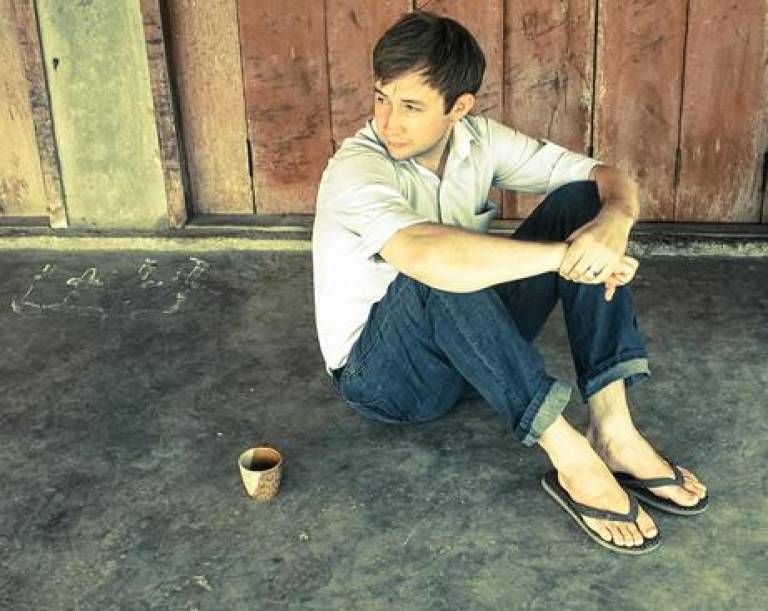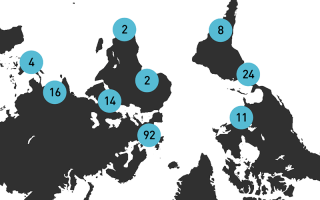Nathan recounts experiences of studying MSc Building & Urban Design in Developmentat the Development Planning Unit

For me there has been no other option than to become a designer. My own career trajectory into architecture happened organically as my personal explorations led me from one step to the next, one perspective shift after another, following what seemed to be the most logical way of becoming the type of architect that I wanted to be, one who pursues design for inclusive, alternative modes of development.
As a child, I analysed everything around me and realized that many spaces in buildings and cities seemed to be overlooked by designers who were focused on the “more important” elements of the project. Reflecting on this thought as an adult, I realize that below the surface was my desire to design things holistically without any piece being excluded or given lower priority. The more experience I gain, the more I notice this trend of exclusion being repeated in the world. Many of the celebrated designers and planners responsible for creating our built environment focus on certain aspects of society and particular groups of people, while the rest go unnoticed and underserved.
Earning my bachelor’s degree in Architecture, I received rigorous training and skills essential to becoming an innovative thinker and designer. I learned about holistic design, that each piece is integral to the larger whole. These lessons inspired me, as I have always been a creative problem solver, someone who is very perceptive and analytical of scenarios and constantly inquiring about how they can be improved.
Upon graduation, I began my career working as an architect in New York City, but quickly opted out of what I experienced to be a profession in need of a radical course correction. With the devastation left by Hurricanes Katrina and Rita to the US Gulf Coast in late 2005, I decided to move back to my home state of Louisiana. There, I was able to combine my professional development with community engagement. By working for a small architecture firm with ties to a university, I was able to experience the dual role of architecture and community development by working with people in New Orleans who had been affected by the disasters.
Although this work was not directly tied to any design projects in the office, I began to imagine what it could be like to work in this community engagement capacity and then forge direct connections and collaborations around policy and design projects geared specifically towards addressing these challenges. This dual role—and the given disconnections between conventional practice and real problems encountered in the wider community—inspired and motivated me to fuse these roles into one full-time job as a Peace Corps Volunteer.
As an Urban and Regional Planning Volunteer in Honduras, I had the great opportunity to work directly with the municipal government and local communities, both urban and rural, to collaboratively design and build three projects, as well as plan several others. My work involved re-aligning the aims and goals of the municipal projects with the needs of the community, while simultaneously engaging different actor groups to equip the community members with the skills and awareness to effectively participate in the process.
The successes and challenges of embarking on participatory design, as a foreigner in a different context and culture, left me with more questions than answers. How can a foreign designer pretend to know the best way to design in a language and culture that is not one’s own, one with different social processes and mechanisms for development? What is “participation” and how can it either change or reinforce existing power relations? How can we re-think design processes to question what an act of design should be?
In the MSc Building and Urban Design in Development (BUDD) course, I found an environment of like-minded practitioners, academics and students, which allowed me to critically reflect on the teachings of architecture school and previous experiences in community-based design practice. I was exposed to a new level of theory, knowledge and resources applicable to the re-configuration of architecture, urban design and planning practices in the context of international development. Studying these themes in an interdisciplinary program that is embedded within The Development Planning Unit (DPU) and The Bartlett offers a unique opportunity to explore and learn from the overlaps of design and development planning.
The combination of individual classroom learning, interdisciplinary studio explorations and field research allowed me to take the innovative thinking and design skills acquired in architecture school, and imbue them with meaningful purpose—to further develop my ability to shape and contribute towards a course correction in architecture. I developed my dissertation as an exploration of a critical re-positioning of architecture in an expanded design field—one that analyses and speculates on the ethics and methodology for a re-conceptualised design field—seeking to understand “how” to engage with cultural, social and political dynamics.
After graduation, I worked with a local chapter of Architecture for Humanity in Bogotá, Colombia to develop co-design strategies, which incorporated ideas directly from my dissertation topic. I worked with students to develop design frameworks that allowed them to use video games to explore their own design solutions for a new school project. After six years of working in various cultures and scenarios from Southeast Asia to the Middle East to Latin America, I returned to the US to work with Inscape Publico. At the Washington D.C. based architecture nonprofit firm, I work on strategic planning and international outreach, developing new projects and community partners.
The BUDD course has been a critical point in re-aligning my career path towards a convergent design practice. My work and continued research interests seek to develop innovative approaches that redefine participation in an expanded design field, incorporating formal and informal logic towards creating more evolutionary design processes that are responsive to and determined by marginalized populations in both “developed” and “developing” contexts. My varied experiences, renewed and challenged through the BUDD program, have informed my desire to connect the theoretical and the abstract with the concrete realities faced in scenarios of everyday life.
 Close
Close


